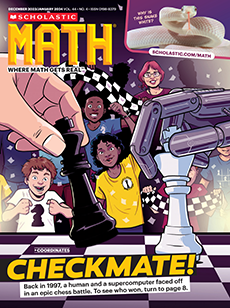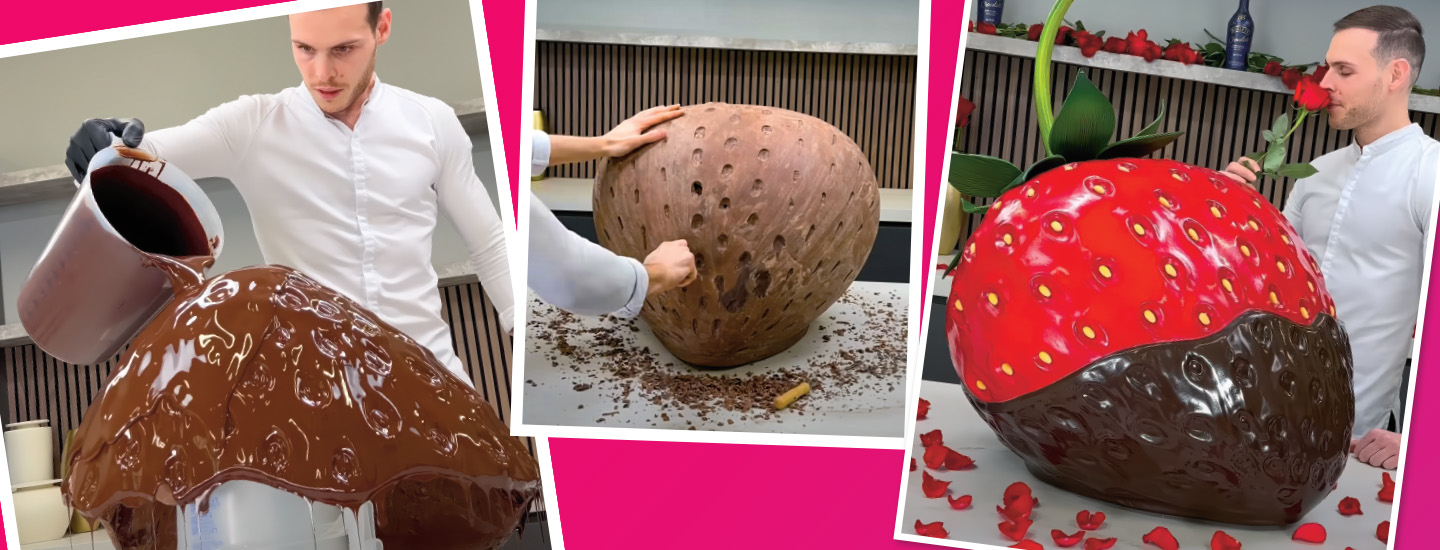Watch Amaury Guichon in action, and there’s no doubt he’s an artist. He sculpts, chisels, and paints. But Guichon isn’t working with a material like wood or clay. He does it all with chocolate! Guichon is a pastry chef and chocolatier based in Las Vegas, Nevada. His chocolate sculptures are 100% edible—even the paint! They include a 550-pound velociraptor, an 8-foot-tall giraffe, and a replica of the Eiffel Tower.
Guichon grew up in the mountains of southeastern France. He started his culinary career at age 14, spending two years as an apprentice learning to make desserts. “That’s where I discovered the amazing possibilities of chocolate,” he says. Today Guichon runs his own pastry academy in Las Vegas. He trains other chefs and shares his chocolate sculptures with more than 50 million followers on social media.
Amaury Guichon is an artist. He paints, sculpts, and chisels. But he isn’t working with a material like wood or clay. He does it all with chocolate!
Guichon is a pastry chef and chocolate maker. He’s based in Las Vegas, Nevada. His chocolate sculptures are 100% edible—even the paint! He’s made a 550-pound velociraptor and an 8-foot-tall giraffe. He even made a chocolate model of the Eiffel Tower!
Guichon grew up in France. He started making desserts when he was 14. To learn more, he spent two years training with a professional pastry chef. “That’s where I discovered the amazing possibilities of chocolate,” he says. Today Guichon runs his own pastry school in Las Vegas. He trains other chefs and shares his chocolate sculptures on social media. More than 50 million people watch his videos.

